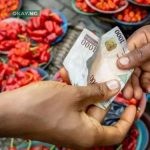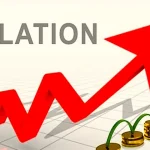Nigeria’s headline inflation rate climbed to 34.80% in December 2024, marking a 0.20% increase from November’s 34.60%, marking fifth year of rising prices according to the latest Consumer Price Index (CPI) recently released n January 2025.
Food and non-alcoholic beverages remain the primary inflation driver, contributing 18.02% to the headline figure, followed by housing and utilities at 5.82%. This composition suggests that essential goods and services are driving the inflationary trend, potentially exacerbating economic hardship for lower-income households.
The national year-on-year increase of 5.87 percentage points from December 2023’s 28.92% underscores the broader inflationary pressures facing the economy. The twelve-month average inflation rate of 33.24% represents an 8.58 percentage point surge from the previous year, indicating a sustained deterioration in purchasing power across the nation.
Despite the year-on-year increase, the month-on-month inflation rate showed a slight deceleration, dropping to 2.44% in December from 2.64% in November 2024. This marginal improvement suggests a modest slowdown in the pace of price increases, though the overall trend remains concerning.
The twelve-month average inflation rate stood at 33.24%, representing an 8.58 percentage point increase compared to December 2023’s figure of 24.66%. This sustained rise indicates a deepening cost-of-living crisis affecting Nigerian households.
Urban areas continue to bear the brunt of inflationary pressures, with urban inflation at 37.29% compared to rural inflation of 32.47%. This urban-rural divide adds another layer to the complex pattern of regional economic disparities.
Analysis of state-level data reveals a stark contrast in inflation experiences. Bauchi state recorded the highest headline inflation at 44.06%, followed by Sokoto at 42.43% and Kebbi at 41.47%.
Read Also: US Grants Nigeria $2 Million for Fibre Optic Infrastructure Assessment
In contrast, Katsina registered the lowest rate at 28.33%, with Delta and Imo following at 29.23% and 29.99% respectively, creating a concerning 15.73 percentage point gap between the highest and lowest rates.
The varied regional impact presents significant challenges for policymakers, suggesting the need for targeted interventions rather than one-size-fits-all approaches. The substantial differences between states highlight the importance of considering local economic conditions in formulating anti-inflationary measures.
These regional disparities also raise questions about the effectiveness of current monetary and fiscal policies in addressing inflation across different geographical areas, particularly given the persistent north-south variations in inflation rates.












